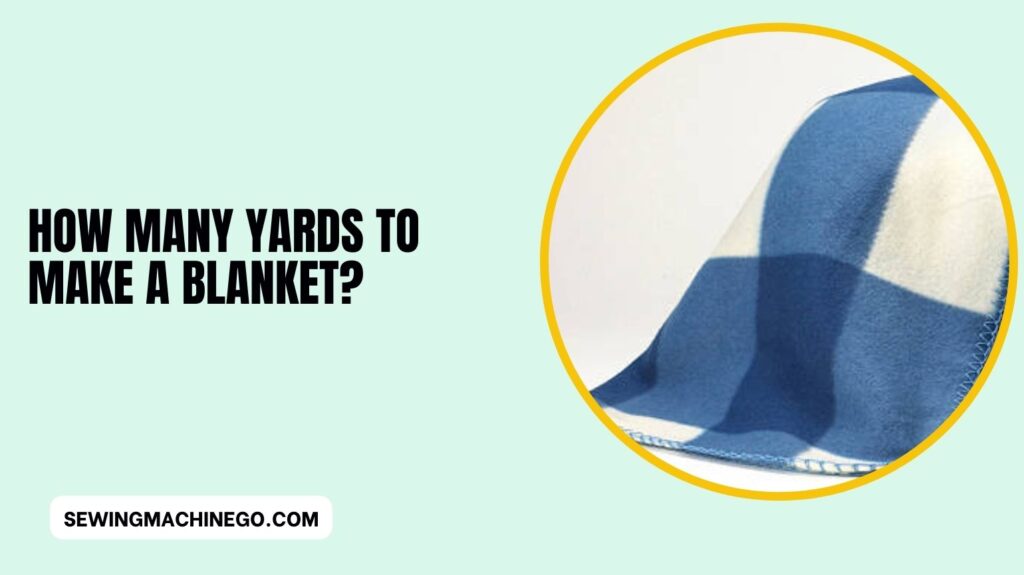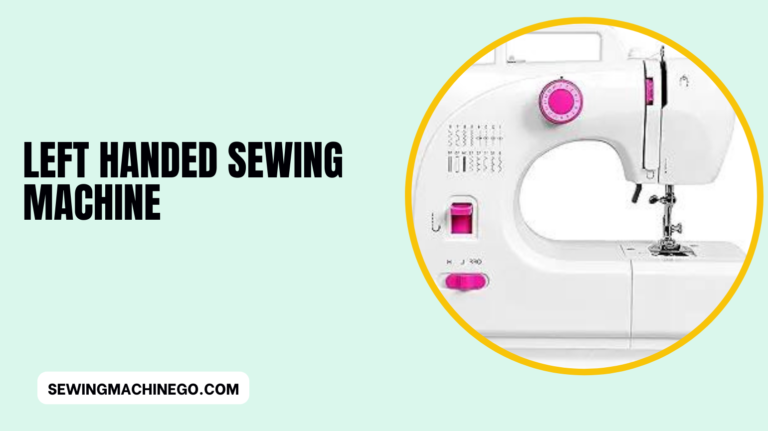How Many Yards to Make a Blanket? (Best Guide) In 2024
The journey to crafting a blanket involves understanding the fundamental question: How Many Yards to Make a Blanket?
The necessary yardage depends on several variables such as the blanket’s size, desired dimensions, chosen fabric width, and sewing allowances.
Unraveling this query involves a precise calculation and consideration of individual preferences, ensuring sufficient yardage for a cozy, tailor-made blanket.

Introduction to Making Blankets
Creating a blanket isn’t just about weaving threads together; it’s about transforming yarn into a warm, comforting piece. However, the question arises: how much yarn, in terms of yards, do you need to craft a blanket?
Understanding Yardage in Blanket Making
Yardage refers to the amount of yarn required for a particular project. In blanket making, it determines the length of yarn necessary to complete the project based on its size, stitches, and patterns.
Standard Yardage for Different Blanket Sizes
Blankets come in various sizes, from small ones for cribs to large, luxurious ones for king-size beds. The yardage varies accordingly.
For instance, small blankets like cribs or baby blankets may require a few hundred yards, while larger ones, such as queen or king-sized blankets, might demand several thousand yards.
Factors Influencing Yardage Calculation
The amount of yarn needed depends on multiple factors. Yarn weight, knitting or crochet tension, and stitch complexity significantly impact yardage calculations. Bulkier yarns generally require fewer yards than finer ones.
Calculating Yardage: Step-by-Step Guide
To accurately calculate yardage, start by measuring your gauge, determining the desired blanket size, and then employing simple mathematical equations to compute the required yardage.
1. Measuring Gauge
The gauge refers to the number of stitches and rows per inch in your knitting or crochet project. Begin by creating a gauge swatch using the yarn and needles/hooks you intend to use for your blanket. Measure the number of stitches and rows within a 4-inch square of the swatch.
2. Determining Blanket Size
Decide on the dimensions of your desired blanket. Whether it’s a crib-sized blanket, a throw for your couch, or a larger bedspread, determine the width and length in inches.
3. Calculating Required Yardage
Once you have your gauge and the blanket’s size, calculate the number of stitches and rows you’ll need for the entire blanket. Then, multiply these numbers by the gauge measurements.
- For Stitch Count: Multiply the number of stitches per inch by the desired width of the blanket.
- For Row Count: Multiply the number of rows per inch by the desired length of the blanket.
This will give you an estimation of the total number of stitches and rows required.
4. Yardage Calculation Formula
Now that you have the total stitch and row count, use this formula to calculate the yardage needed:
Total Yardage = (Total Stitch Count x Yards per Stitch) + (Total Row Count x Yards per Row)
- Yards per Stitch: Determine the average length of yarn used for one stitch. It’s usually based on the weight and thickness of the yarn.
- Yards per Row: Similar to yards per stitch, this measures the length of yarn required for one row.
Add the results of the stitch and row calculations to get the total yardage required for your blanket.
5. Adding Extra Yarn for Safety
It’s advisable to add a little extra yarn (commonly 10-20% more) to your calculated yardage to account for unforeseen changes in tension, mistakes, or if the yarn gets discontinued.
6. Consider Stitch Patterns
If your blanket includes complex stitch patterns or textures, it might require more yarn than a simple garter or stockinette stitch. Adjust your calculations accordingly.
7. Utilizing Online Calculators
Several online tools and calculators are available to simplify yardage estimation. They often consider various yarn weights, stitch patterns, and blanket sizes, making the process easier.
Tips for Accurate Yardage Estimation
Utilizing online calculators or keeping extra yarn for safety ensures you don’t run short. These strategies assist in preventing interruptions while working on your blanket masterpiece.
Here are some essential tips to ensure accurate yardage estimation for your blanket-making project:
1. Understand Yarn Weight and Thickness
Different yarn weights (such as lace, fingering, worsted, etc.) have varying thicknesses. Thicker yarns generally cover more surface area, requiring fewer yards compared to finer yarns.
Familiarize yourself with the weight of the yarn you’re using to estimate yardage more accurately.
2. Measure Your Gauge
Create a gauge swatch using the same yarn and needles/hooks you intend to use for the blanket. Measure the number of stitches and rows per inch in the swatch.
Accurate gauge measurements serve as a foundation for precise yardage calculations.
3. Consider Stitch Patterns and Complexity
Different stitch patterns use varying amounts of yarn. Intricate patterns or textured stitches might require more yarn compared to simpler ones like stockinette or garter stitch. Account for this when estimating yardage.
4. Utilize Online Calculators
Online calculators specifically designed for yarn estimation can be incredibly helpful. They often take into account different yarn weights, stitch patterns, and blanket sizes, providing accurate estimations.
5. Keep Extra Yarn for Safety
It’s prudent to purchase slightly more yarn than calculated. Adding 10-20% extra yarn serves as a safety net in case of unexpected tension changes, mistakes, or if the yarn gets discontinued.
6. Know Your Blanket Size
Determine the precise dimensions of your blanket. Whether it’s for a crib, throw, or a larger bedspread, having the exact measurements helps in calculating the required yardage more accurately.
7. Account for Variations in Yarn Skeins
Yarn skeins might slightly vary in length, even if they’re from the same batch. To avoid discrepancies, try to buy all the yarn needed for your project at once, or ensure the dye lot numbers match.
8. Refer to Past Projects
If you’ve made a similar blanket before, refer to the yardage used in that project. It can serve as a good reference point for estimating yarn needs in your current endeavor.
9. Consult with Experienced Crafters
Engage with crafting communities or seek advice from experienced knitters, crocheters, or weavers. They often have valuable insights and tips based on their own experiences.
Importance of Accurate Yardage Calculation
Accurate yardage estimation avoids the frustration of running out of yarn midway through your project and minimizes excess yarn that might otherwise go to waste.
People also ask
How many yards of fabric do I need for a blanket?
The yardage of fabric needed for a blanket depends on the desired size and fabric width.
As a general guide, for a standard throw-size blanket (around 50×60 inches), you might need around 3.5 to 4 yards of 54-inch wide fabric.
For larger blankets, especially for beds, the yardage will increase accordingly.
Is 2 yards long enough for a blanket?
Two yards of fabric might be sufficient for smaller projects like a baby blanket or a lap throw, depending on the desired size.
However, for standard-sized blankets or larger throws, 2 yards might not provide enough coverage.
Consider the intended use and dimensions of the blanket before determining the yardage needed.
How many yards are normal blankets?
The yardage for normal blankets varies widely based on size and type. A standard throw blanket might range from 3 to 4 yards,
while larger blankets for beds can require 5 yards or more, depending on the bed size and desired drape. It’s best to measure or refer to a specific pattern for accurate yardage requirements.
How many yards do you need for a tie blanket?
For a tie blanket, you typically use two pieces of fabric, one for the front and one for the back. The yardage needed depends on the desired size of the blanket.
A simple square tie blanket might require 2 to 3 yards of each fabric, depending on the desired dimensions.
Conclusion – How Many Yards to Make a Blanket?
In Conclusion, The number of yards needed to make a blanket hinges on various factors like size, pattern, and desired thickness.
Generally, a simple blanket might require 3-6 yards, but intricate designs or larger sizes could demand more. Calculating the specific yardage relies on the chosen pattern and personal preferences for the blanket’s dimensions.

Hi, I am Alice, and I am your perfect guide to the world of sewing machines. With over 10 years of experience in the sewing industry, I am passionate about sharing my knowledge and expertise to help you make the most of your sewing journey. about me






